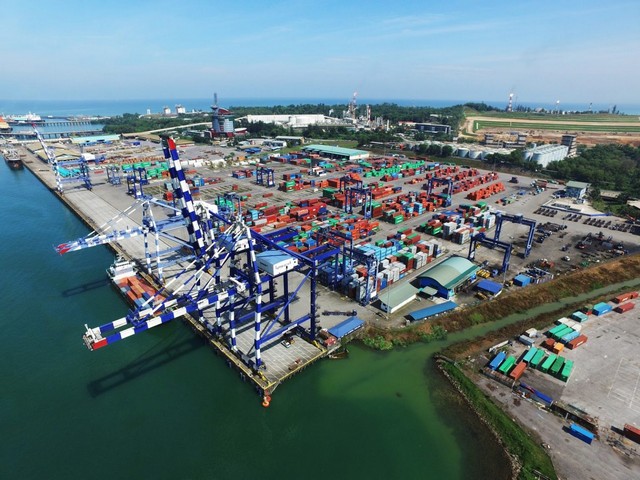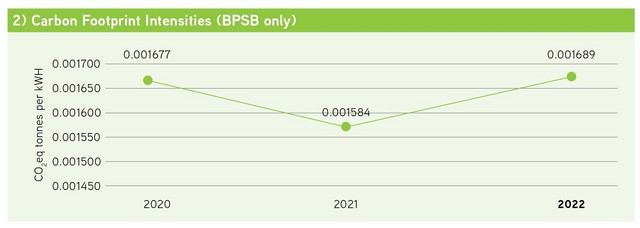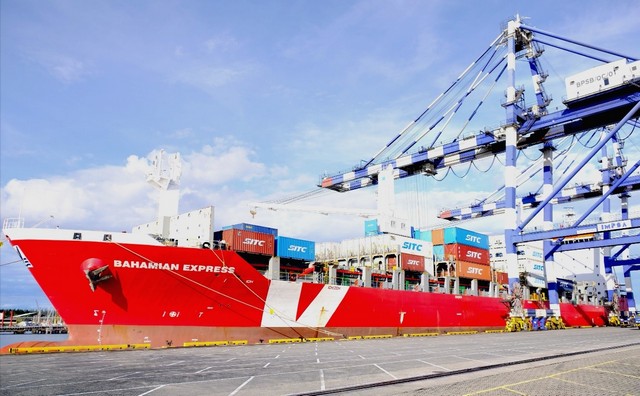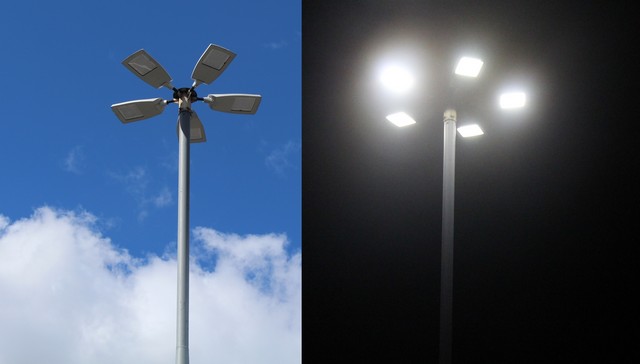In a global economy that is putting greater emphasis on ESG (Environmental, Social, Governance) considerations, there is a need for ports to play their part in decarbonising their services.

Apart from their role in linking shipping and inland logistics which makes them essential within the supply chain, these maritime facilities tend to be reliant on fossil fuel in its operations, resulting in emissions of greenhouse gases including Carbon Dioxide, and air pollutants such as Sulphur emissions, Nitrogen Oxide and Particular Matters.
According to the World Ports Sustainability Program, emission-producing activities from ports can be categorised into three scopes, which have be references for the development of carbon footprint inventories worldwide:


- Scope 1 – Port Direct Sources: Sources that are directly under the control and operation of the port administration entity and include port-owned fleet vehicles, port administration owned or leased vehicles, buildings (e.g., boilers, furnaces, etc.), port-owned and operated cargo handling equipment (to the extent the port is an operating port as described above), and any other emissions sources that are owned and operated by the port administrative authority.
- Scope 2 – Port Indirect Sources: Sources including port purchased electricity for port administration owned buildings and operations. Tenant power and energy purchases are not included in this scope.
- Scope 3 – Other Indirect Sources: Sources that are typically associated with tenant operations and include ships, trucks, cargo handling equipment, rail locomotives, harbour craft, tenant buildings, tenant purchased electricity, and port and tenant employee commuting (train, personal car, public transportation, etc.).
Bintulu Port Sdn Bhd (BPSB), under its parent company Bintulu Port Holdings Berhad (BPHB), is no exception to this exercise, as it has been monitoring its carbon emissions in its administration.
In its 2021 annual report, BPHB stated that carbon emission reduction is vital in its goal towards becoming a carbon neutral port and efforts to lessen operation cost through better efficient utilisation of its resources.
Since re-establishing its carbon baseline in 2020, BPHB has undertaken mitigation initiatives such as:
- Collaborating with Petronas on Solar Panel project (ongoing)
- Conducting a feasibility study to evaluate the potential of Onshore Power Supply for container vessels at Bintulu International Container Terminal (BICT) with the intention to reduce Scope 3 emissions
- Continuously installing LED-type lighting with lower energy consumption with the same intensity
Based on BPSB’s data between 2020 and 2022, carbon emissions under Scope 1 showed slight reduction for the first two years – from 13,692.002 carbon dioxide equivalent (CO2eq) to 13,478.017 CO2eq – before a rise to 14,503.018 CO2eq in 2022.
“The pattern of Carbon emissions under Scope 1 is based on number of vessel calls and operation demand. Higher demand will cause higher fuel consumption which cause higher amount of Carbon generated,” explains BPSB in a written reply to RAKAN Sarawak.

Emissions under Scope 2, however, showed an inverse pattern. Despite an increase in 2021 from the previous year, it dropped to 3,461.678 CO2eq in 2022.
“For the first two years, Carbon emission under Scope 2 showed an increment (which) was affected by the number of twenty-foot equivalent unit (TEUs) container managed per year since the handling equipment (Quay Crane) is powered by electricity.
“For the decrement from 2021 to 2022, this is due to lighting being installed with LED lighting, including High Mast lighting,” BPSB elaborates, adding that these energy-saving lights account for 80 per cent of lighting in port areas (at the time of writing).
Data on reduction of carbon emissions is also measured in terms of emission intensity for fuel and electricity. In the same period, carbon emission intensity at BPSB has surged from 2021 to 2022, largely due to the organisation’s increasing use of diesel to meet demands such as a rise in vessel calls and fuel consumption.

Towards Becoming a Smart, Digital and Green Port
Carbon emission reduction is one of various initiatives implemented by BPHB under the Smart Digital Green Port (SDGP) strategy, which encompasses all aspects of port operations, such as energy management, waste management, noise pollution and even climate change.
It also works hand in hand with principles of ISO 14001:2015 in terms of operations, as well as preventive approaches in accordance with the Environmental Quality Act 1974 and BPHB Group Environmental Policy in terms of environmental risk assessment.
And as Sarawak aspires to become an advanced, high-income region by 2030 through Post COVID-19 Development Strategy (PCDS) 2030, the organisation and its subsidiaries including BPSB are actively aligning its planning based on the Sustainable Development Goals (SDGs) as reference for sustainable development.
“A port is an infrastructure. To develop it is capital intensive, and it requires looking at the market – how many vessels are coming in, for example – because it is linked with trade.
“Ultimately, the challenge is to ensure that we (BPHB and its subsidiaries) are able to support a region’s socio-economic direction and development through trade and maintain constant collaboration with our stakeholders,” says BPHB General Manager for Group Health, Safety and Environment (HSE) Abdani bin Abdul Gafor in an interview with RAKAN Sarawak.

His division headed the taskforce to work together with BPSB to ensure the smooth process of the subsidiary’s participation in the 10th Premier of Sarawak Environmental Award (PSEA) – from gathering the necessary information and data related to its environmental efforts to setting the direction on participating in the award.


BPSB has been joining the biennial programme since its inception – then named the Sarawak Chief Minister’s Environmental Award (CMEA) – in 2001. It serves as a platform for the organisation to demonstrate its commitment towards continuous improvement on its environmental performance.
“Being part of PSEA allows us to benchmark ourselves in terms of where we are environmentally,” adds En Abdani.
He notes that any port development is subjected to stringent environmental impact assessment (EIA), given how port-related activities such as dredging, construction work, and discharges from ships can potentially lead to numerous adverse consequences including water and noise pollution, contamination of bottom sediments, and damages to marine ecology and fisheries.
In Malaysia, such development is listed in the Environmental Quality (Prescribed Activities) (Environmental Impact Assessment) Order 2015, specifically:
- Expansion of port involving an increase of 50 per cent or more in handling capacity per annum, and expansion of fishing port involving an increase of 50 per cent or more in fish landing capacity per annum (First Schedule); and
- Construction of a new port, and construction of a new fishing port (Second Schedule).
By prioritising the environment in every aspect of its operation and development, BPSB is able to gain and retain confidence and relationships with its customers, as well as boost its productivity as one of the largest Liquefied Natural Gas (LNG) export terminals in the world.
It also takes the organisation further into fulfilling its long-term outlook and prospect of enhancing its sustainability and competitiveness through strategic evolvement in order to become a global smart, digital and green port.
About the Premier of Sarawak Environmental Award
Formerly known as the Sarawak Chief Minister’s Environmental Award (CMEA), the Premier of Sarawak Environmental Award (PSEA) was introduced in 2001 by the Natural Resources and Environment Board (NREB) in collaboration with Sarawak Business Federation (SBF).
It gives recognition to those who have demonstrated exemplary environmental effort and commitment in Sarawak, be they industries, local authorities, government sectors, teams, individuals, or eateries and food outlets.
The award strives to empower and inculcate positive attitude and raise awareness on environmental sustainability. It also aims to reinforce the concept of environmental sustainability as being everyone’s business; provide organisations with the opportunity of an independent evaluation of their environmental commitment, management, and performance; and recognise those who have contributed significantly to environmental sustainability.
During the 10th edition that was held in December 2022, BPSB earned the Merit Award in the Government-linked Company (GLC) Category.
Goal of BPHB’s Smart Digital Green Port Strategy
To promote sustainability and environmental awareness at all levels of the Group through:
- Complying with all applicable environmental legislation and sustainability commitments.
- Measuring and analysing the carbon footprint of all business activities in conjunction with other climate change mitigation and adaptation efforts.
- Preventing pollution and reducing the consumption of resources through waste management strategies that promote waste minimisation, re-use, recovery and recycling, as appropriate.
- Incorporating energy efficiency measures into the Group’s facilities and promoting efficient energy use in all relevant areas of business activity to minimise its usage.
Source: Bintulu Port Holdings Berhad, Integrated Annual Report 2021
References:
Alamoush, A. S., Ölçer, A. I., & Ballini, F. (2021). Ports’ role in shipping decarbonisation: A common port incentive scheme for shipping greenhouse gas emissions reduction. Cleaner Logistics and Supply Chain, 3, 100021. https://doi.org/10.1016/j.clscn.2021.100021
Bintulu Port Holdings Berhad. (2022). Integrated Annual Report 2021. Bintulu Port Holdings Berhad. https://www.bintuluport.com.my/WebLITE/Applications/WCM/uploaded/docs/Investor%20Relations/Annual%20Report/BPHB%20IAR2021_WEBSITE.pdf
Bintulu Port Holdings Berhad. (2023). Integrated Annual Report 2022. Bintulu Port Holdings Berhad. https://www.bintuluport.com.my/WebLITE/Applications/WCM/uploaded/docs/BPHB%20IAR2022_WEBSITE%205.0.pdf
Carbon Footprinting Working Group. (2010, June). Carbon Footprinting for Ports: Guidance Document. World Ports Sustainability Program. https://sustainableworldports.org/wp-content/uploads/Carbon_Footprinting_Guidance_Document.pdf
Department of Environment. (n.d.). Environmental Impact Assessment (EIA). https://www.doe.gov.my/en/environmental-impact-assesment-eia/
Economic and Social Commission for Asia and the Pacific. (1992). Assessment of Environmental Impact of Port Development – A Guidebook for EIA of Port Development. United Nations. https://www.unescap.org/sites/default/files/pub_1234_fulltext.pdf
Lavelle, C., & Hoyland, R. (2022, July 13). Decarbonisation and shipping: ports. Lexology. https://www.lexology.com/library/detail.aspx?g=56acae34-4332-4d3e-b418-e81db521ef71
Natural Resources and Environment Board Sarawak. (n.d.). Premier of Sarawak Environmental Award. https://www.nreb.gov.my/page-0-0-261-Premier-of-Sarawak-Environmental-Award.html





